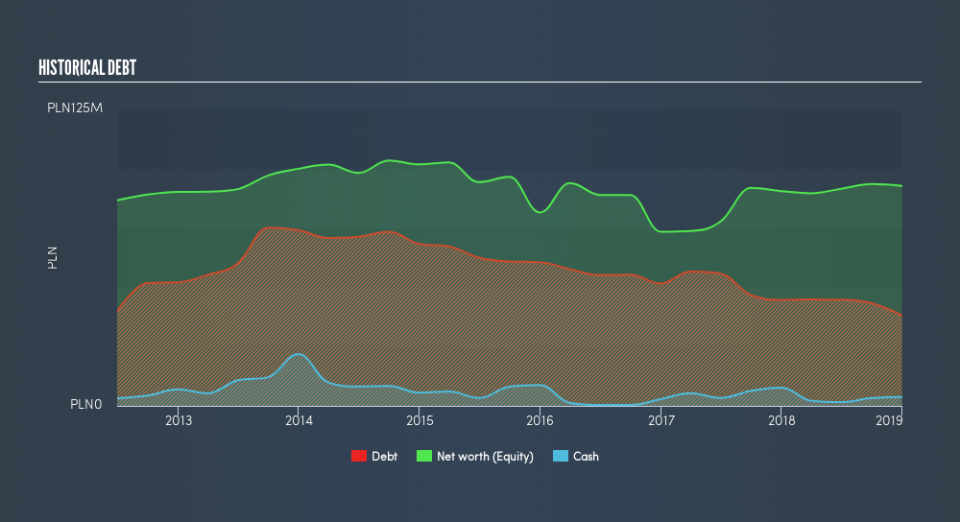What Investors Should Know About Radpol S.A.'s (WSE:RDL) Financial Strength

Investors are always looking for growth in small-cap stocks like Radpol S.A. (WSE:RDL), with a market cap of zł55m. However, an important fact which most ignore is: how financially healthy is the business? Understanding the company's financial health becomes vital, as mismanagement of capital can lead to bankruptcies, which occur at a higher rate for small-caps. Let's work through some financial health checks you may wish to consider if you're interested in this stock. Nevertheless, potential investors would need to take a closer look, and I recommend you dig deeper yourself into RDL here.
Want to participate in a short research study? Help shape the future of investing tools and you could win a $250 gift card!
Does RDL Produce Much Cash Relative To Its Debt?
RDL has shrunk its total debt levels in the last twelve months, from zł45m to zł38m , which includes long-term debt. With this debt repayment, RDL currently has zł3.7m remaining in cash and short-term investments to keep the business going. Moreover, RDL has generated cash from operations of zł13m during the same period of time, resulting in an operating cash to total debt ratio of 34%, signalling that RDL’s debt is appropriately covered by operating cash.
Does RDL’s liquid assets cover its short-term commitments?
With current liabilities at zł54m, it seems that the business has maintained a safe level of current assets to meet its obligations, with the current ratio last standing at 1.31x. The current ratio is the number you get when you divide current assets by current liabilities. Usually, for Electrical companies, this is a suitable ratio since there is a bit of a cash buffer without leaving too much capital in a low-return environment.
Does RDL face the risk of succumbing to its debt-load?
With debt reaching 41% of equity, RDL may be thought of as relatively highly levered. This is somewhat unusual for small-caps companies, since lenders are often hesitant to provide attractive interest rates to less-established businesses. No matter how high the company’s debt, if it can easily cover the interest payments, it’s considered to be efficient with its use of excess leverage. A company generating earnings before interest and tax (EBIT) at least three times its net interest payments is considered financially sound. In RDL's case, the ratio of 2.5x suggests that interest is not strongly covered, which means that debtors may be less inclined to loan the company more money, reducing its headroom for growth through debt.
Next Steps:
RDL’s high cash coverage means that, although its debt levels are high, the company is able to utilise its borrowings efficiently in order to generate cash flow. This may mean this is an optimal capital structure for the business, given that it is also meeting its short-term commitment. This is only a rough assessment of financial health, and I'm sure RDL has company-specific issues impacting its capital structure decisions. I suggest you continue to research Radpol to get a more holistic view of the small-cap by looking at:
Valuation: What is RDL worth today? Is the stock undervalued, even when its growth outlook is factored into its intrinsic value? The intrinsic value infographic in our free research report helps visualize whether RDL is currently mispriced by the market.
Historical Performance: What has RDL's returns been like over the past? Go into more detail in the past track record analysis and take a look at the free visual representations of our analysis for more clarity.
Other High-Performing Stocks: Are there other stocks that provide better prospects with proven track records? Explore our free list of these great stocks here.
We aim to bring you long-term focused research analysis driven by fundamental data. Note that our analysis may not factor in the latest price-sensitive company announcements or qualitative material.
If you spot an error that warrants correction, please contact the editor at editorial-team@simplywallst.com. This article by Simply Wall St is general in nature. It does not constitute a recommendation to buy or sell any stock, and does not take account of your objectives, or your financial situation. Simply Wall St has no position in the stocks mentioned. Thank you for reading.

